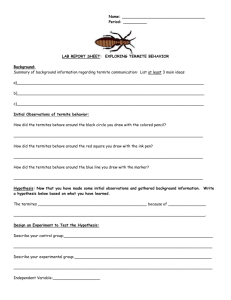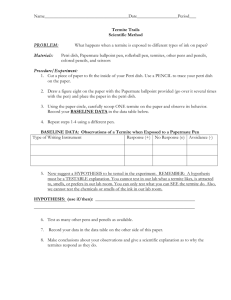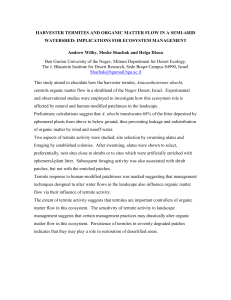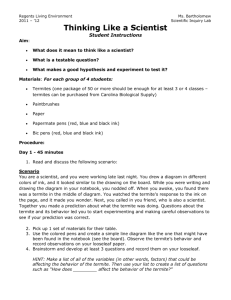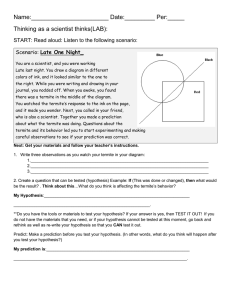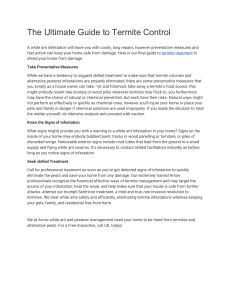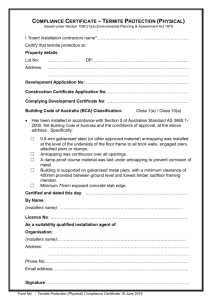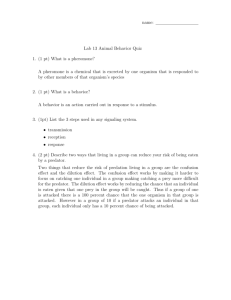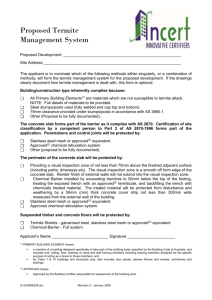Termite Behavior Lab
advertisement
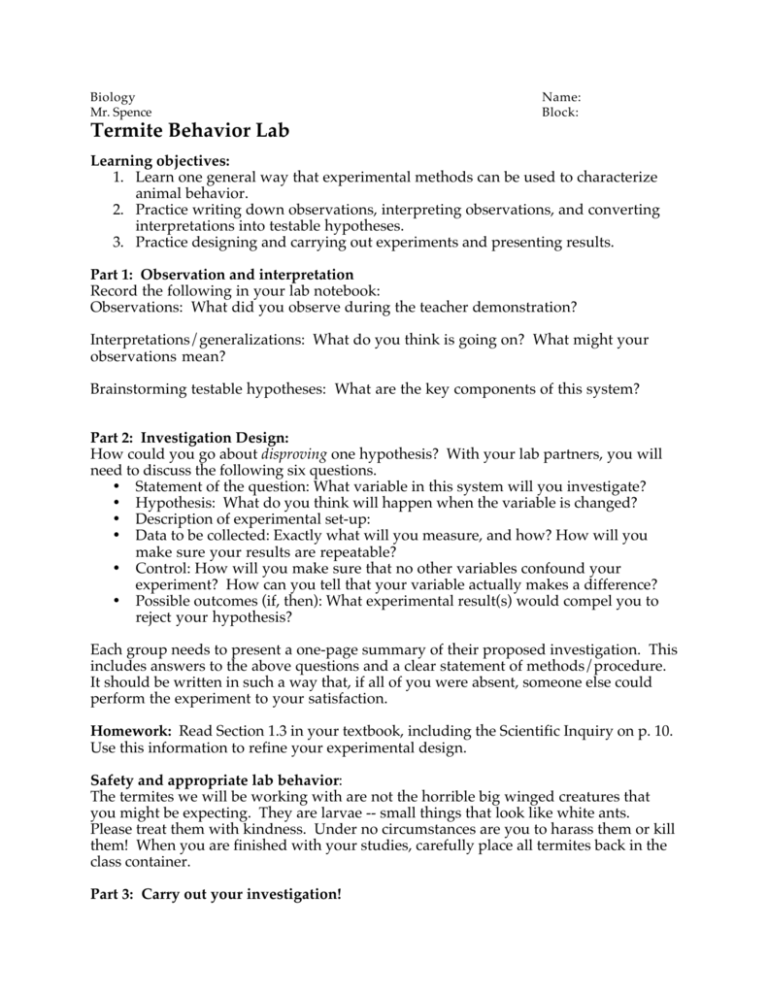
Biology Mr. Spence Name: Block: Termite Behavior Lab Learning objectives: 1. Learn one general way that experimental methods can be used to characterize animal behavior. 2. Practice writing down observations, interpreting observations, and converting interpretations into testable hypotheses. 3. Practice designing and carrying out experiments and presenting results. Part 1: Observation and interpretation Record the following in your lab notebook: Observations: What did you observe during the teacher demonstration? Interpretations/generalizations: What do you think is going on? What might your observations mean? Brainstorming testable hypotheses: What are the key components of this system? Part 2: Investigation Design: How could you go about disproving one hypothesis? With your lab partners, you will need to discuss the following six questions. • Statement of the question: What variable in this system will you investigate? • Hypothesis: What do you think will happen when the variable is changed? • Description of experimental set-up: • Data to be collected: Exactly what will you measure, and how? How will you make sure your results are repeatable? • Control: How will you make sure that no other variables confound your experiment? How can you tell that your variable actually makes a difference? • Possible outcomes (if, then): What experimental result(s) would compel you to reject your hypothesis? Each group needs to present a one-page summary of their proposed investigation. This includes answers to the above questions and a clear statement of methods/procedure. It should be written in such a way that, if all of you were absent, someone else could perform the experiment to your satisfaction. Homework: Read Section 1.3 in your textbook, including the Scientific Inquiry on p. 10. Use this information to refine your experimental design. Safety and appropriate lab behavior: The termites we will be working with are not the horrible big winged creatures that you might be expecting. They are larvae -- small things that look like white ants. Please treat them with kindness. Under no circumstances are you to harass them or kill them! When you are finished with your studies, carefully place all termites back in the class container. Part 3: Carry out your investigation! Once your design has been approved, you may begin your investigation. Keep thorough records (in your lab book!) of what you do and what observations you make. This as-you-go note-taking is important in science and will be an important component of how this assignment is assessed. Extensions: If time is available, each group can attempt to explore at least one other question related to termite behavior, using experimental methods. Be sure to use similar rigor as you did in your last experiment. This is not an exhaustive list, but here are some suggestions: 1. Does an individual termite eventually become habituated to the stimulus and thus ceases to respond to new lines? 2. What happens when a termite comes to a fork in the road? Is the most recently drawn line favored? 3. What happens when a termite reaches the edge of the paper? A dead end? 4. Can a termite follow a dashed line? With varying degrees of separation between the dashes? 5. Try drawing a large area completely filled in with ink. How does the termite behave here? 6. What happens when two termites traveling in opposite directions meet each other? 7. How small a circle can you draw that will keep the termite walking around? 8. (Your idea here). Present your results: Your presentation of results will take two forms: a summary of your studies presented to the class and a few paragraphs written in your lab book. Summary: Generate some form for presenting your results and interpretations to the rest of class (big pieces of paper and markers are available, as one possible form). Be sure to present data sufficient to convince your classmates that you rigorously tested your hypothesis. Be prepared to summarize and defend your interpretations aloud. Lab book: Should clearly articulate what you did, how you did it, you’re your results were, and how you interpreted those results. Data should be organized. Do you think the experimental method would be a good way of investigating behavior for other animals? Think of an observation you’ve made about an animal (your pet? A squirrel? A garden snail?) and sketch out in a few sentences how you might generate hypotheses and test them.

